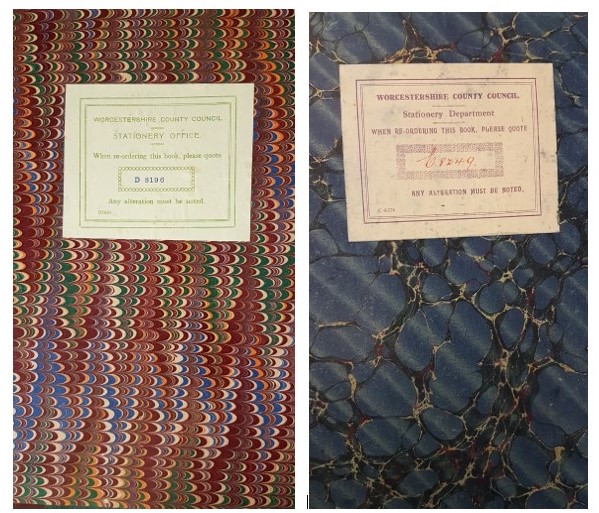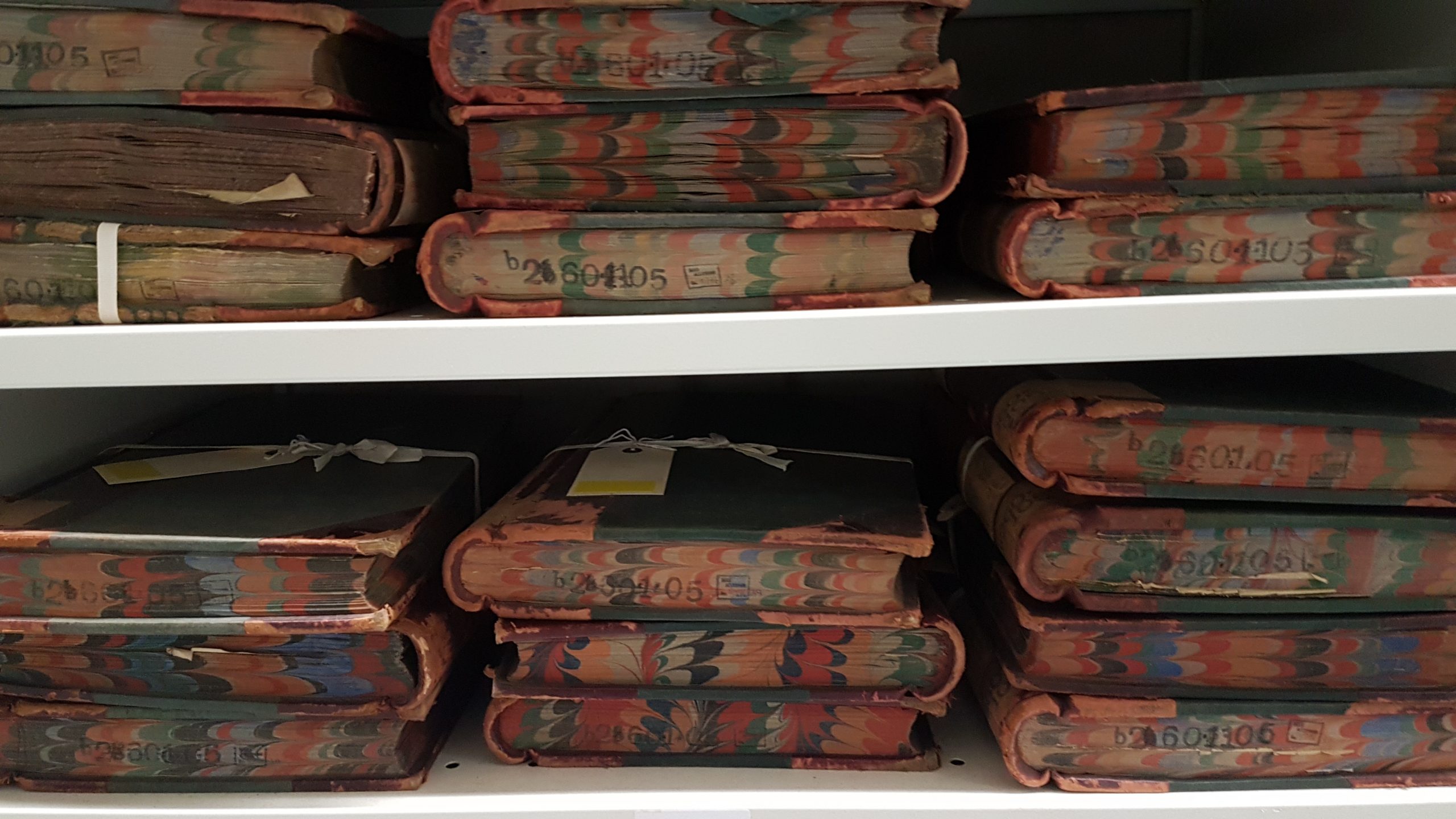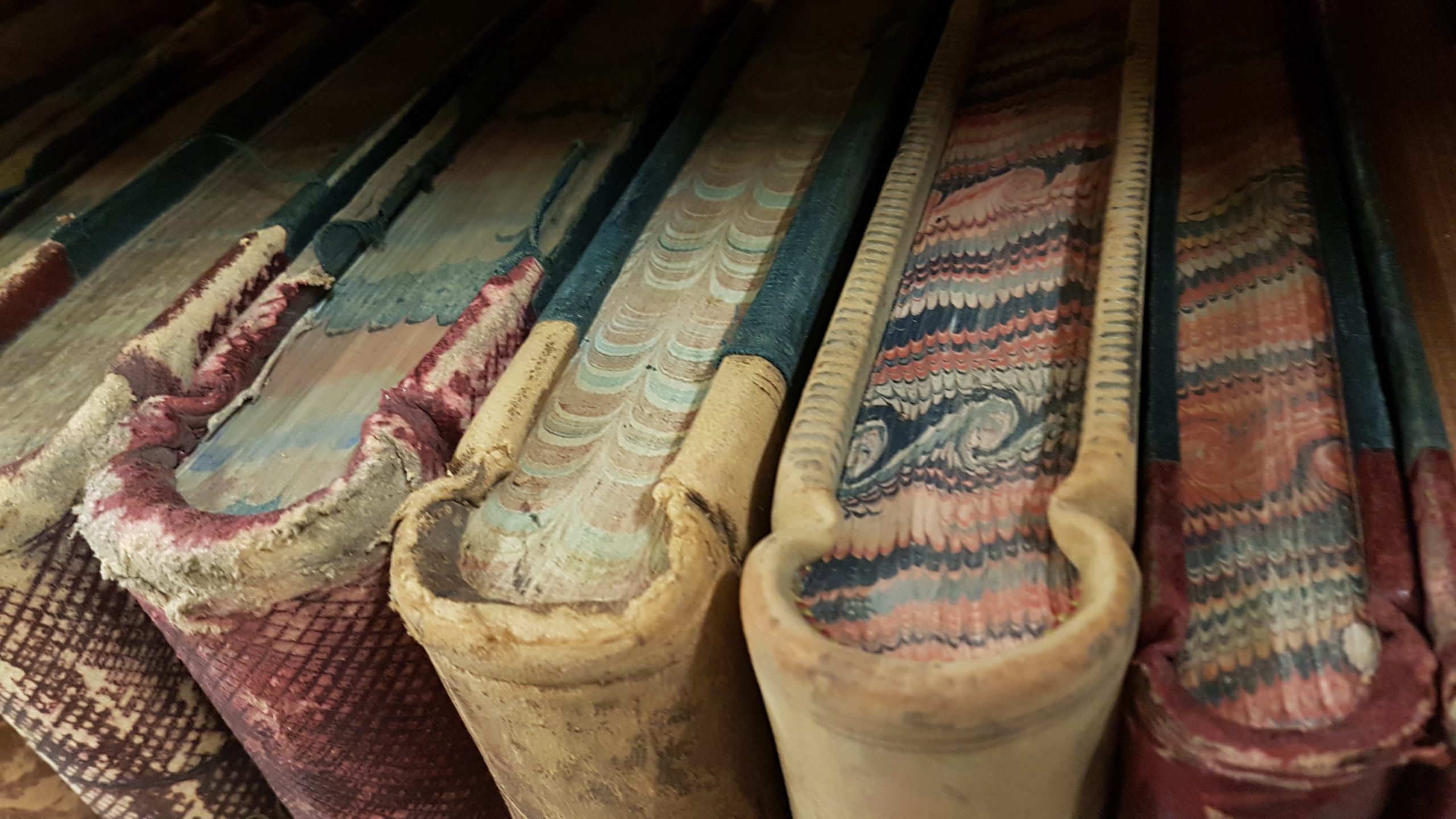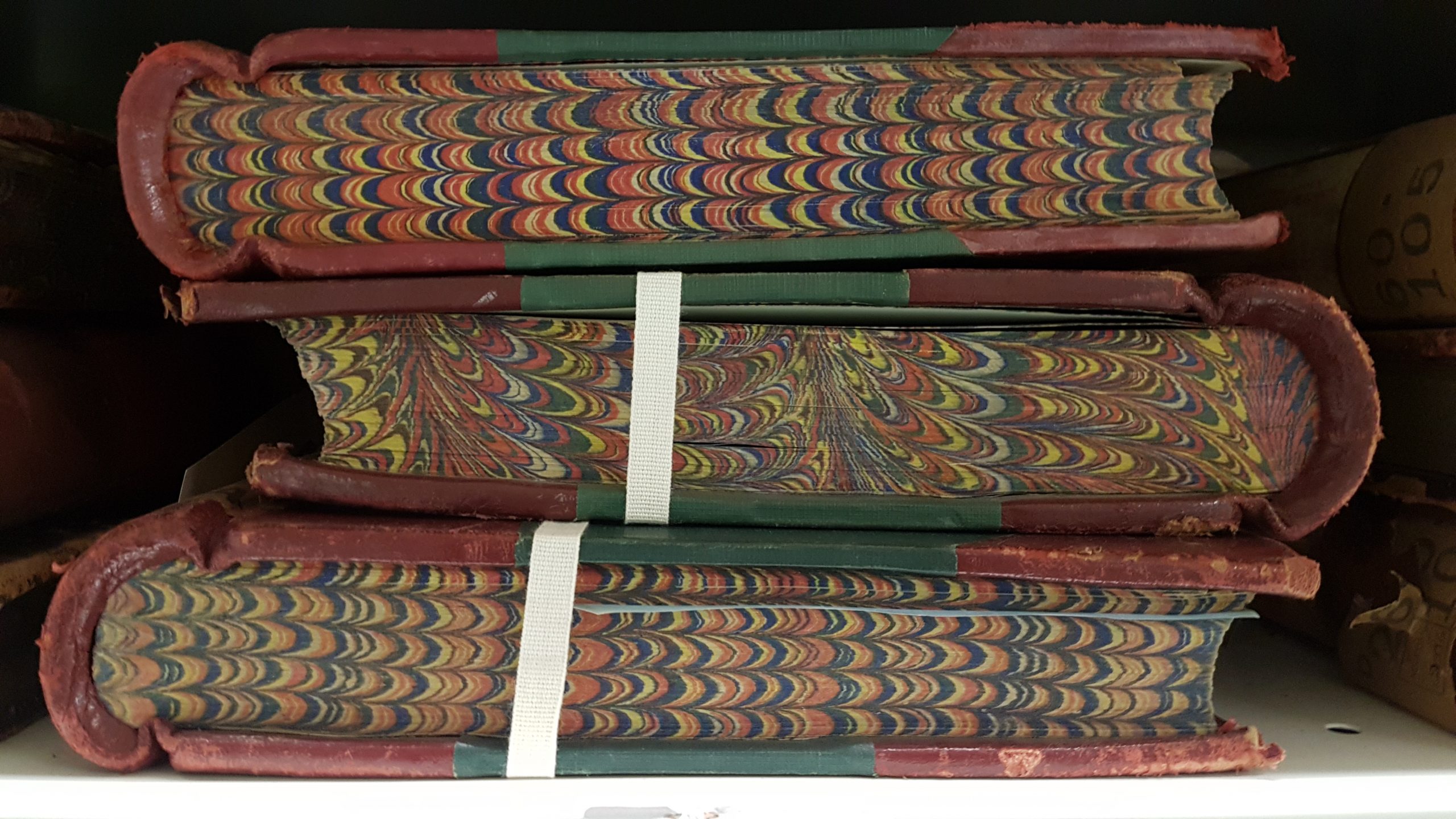Marbled Books
- 17th May 2020
While we are all so disconnected from the archives safely stored in the Hive strong rooms, it’s nice to remember some of the beautiful things we hold in the archives. Some of our most beautiful books have marbled patterns along the edges of pages and on the inside sheets and luckily, one of our archive staff had photographed these to be able to share them. A large number of our most impressive looking marbled books, according to the book plates inside them, were issued from the Worcestershire County Council Stationery Department, but were these bought in ready marbled and printed with forms in the stationery department or were they marbled on site?

Since these are kept carefully in archival conditions, and have previously been kept in cupboards and store rooms, many of the beautiful designs survive with outstanding colours even along the edge of the pages. Even though the Leather or linen covers may look dull, and the accounts or minutes inside might not interest you, the design of the books just might.

The use of printing for documents such as account books became popular during the Victorian era, and they became increasingly beautiful in design as stationers competed for customers. The edges of book pages were marbled in part for security so that a missing page would stand out in the pattern on the book edge. However, the end papers inside the covers of books, often the same patterns as the edges of pages, have no obvious ‘use’. The original colours are often better preserved inside unopened books, so these can be surprisingly bright.

To create the marbling patterns, craftsmen splatter paint in a special water bath and use different tools to make designs. Then they place a piece of treated paper in the bath and the design is transferred to the paper.
The marbled books include many that wouldn’t normally be open for customers to order in the search room such as Petty Sessions, Juvenile Court Registers and Children and Young Persons Court Registers of Case, but other beautiful books in the archives include Committee meetings minutes for hospitals and school boards and Worcestershire County Council and these can usually be viewed.
These are not shown in the catalogue as ‘beautiful’ or ‘marbled’ or even as being printed by the Stationary Department so it’s just luck of the draw what your items might look like when you order them.
Sarah Dentith

Post a Comment